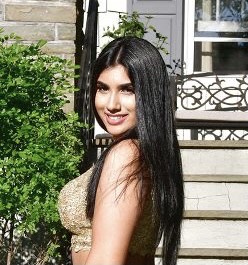Brown people problems
September 9, 2021
As the anniversary of 9/11 approaches, it is necessary to recognize both the devastation of the lives lost during the initial attack and the racial discrimination terrorism has instigated. Over time, racism has relaxed within the brown community, but it is slowly arising again as America accepts Afghan refugees escaping from Talabani control.
Rightly so, it’s concerning if members of the Taliban were to infiltrate refugee crowds considering there are no distinctive physical traits that differentiate the two. Generally, Americans want to help the innocent, but not if the risk factor is incredibly high where terrorists could be plotting against God knows what, where or who.
The most common stereotype of brown people is that we are terrorists. Fortunately, I’m no terrorist. I rarely leave the confines of my bedroom, so I don’t have much leeway to be one.
Since 9/11, the Civil Rights Division, the Federal Bureau of Investigation, and United States Attorney’s Offices have investigated over 800 reported incidents involving violence, threats, vandalism and arson against Arab Americans, Muslims, Sikhs and South Asian Americans.
How ironic, though, that foreign terrorists in the Middle East set the stereotype for brown Americans. But the domestic terrorists, who are consistently white males, that commit mass shootings within the country set no harmful stereotype. The average white male is still considered the leader in every financial, social, and political sector given only one out of the forty-six U.S. presidents was a person of color. If a brown male becomes a leader, he appears suspicious.
So, what about the women?
Lehengas, saris and the many other variations of Indian womenswear are ornate but are still considered apart of Desi cultures and religions. I’ve always received heart-warming compliments when I wear an Indian outfit but have never witnessed a peer being given a genuine compliment on her hijab.
Hijabs are also a part of a culture and religion except they have become main subjects of debate for Islamophobic westerners. Only up until Gen Z’s outpouring of acceptance and inclusivity did hijabs and other Islamic female headdresses also be seen as beautiful by other races.
No one should have a say on the appearance of a brown girl’s hijab or a brown guy’s beard, considering billions of dollars is spent annually to indoor tan – to color white skin, brown. Just like with every issue in America – make it make sense.
I was 16 traveling to Italy when I first got pulled over by the TSA to be questioned. I initially found it laughable considering I’m the least suspicious person, but as I thought it over in the airplane, I realized this is the reality for brown Americans, which started my interest in civil rights. At 16, I was attending private high school and living in comfort, so I didn’t care too much about the world around me. So, it took a personal experience with racial stereotyping to end my close-mindedness.
Three years later at 19, I arrived at JFK alongside my dad, who is also brown-skinned, 6’0 and 300 pounds – a gentle giant, per say. An officer pulled us both aside and asked us to search my suitcase. Trying my hardest not to complain, I complied. I’ve never felt more degraded as a male officer started digging through my underwear, bras and tampons. I didn’t care that my see-through thongs were on display, but it’s the principle behind the search. I wondered what a girl who is more self-conscious would feel like if personal items, such as her undergarments, were tumbled through.
The actions of terrorist organizations heavily reflect on how brown westerns are viewed, so in the end, no TSA agent or officer is to blame for their suspicions. But what some Americans fail to realize is that the prevention of terrorist attacks is also the goal for people who may share the same ethnicity, nationality and religion with these terrorists.



